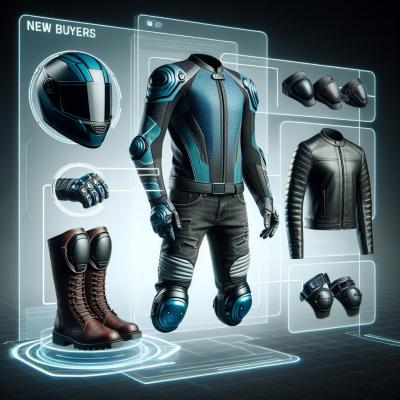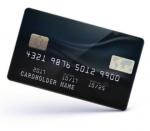Introduction: Why Safety Gear is Crucial for New Riders
Motorcycle accidents are unfortunately quite common. Statistics from Australian road safety authorities indicate that motorcyclists are significantly more likely to be injured or killed in traffic accidents compared to other motorists. This is largely due to the lack of physical protection that a motorcycle provides.
Wearing the right safety gear is not just about following regulations; it’s about protecting yourself. Proper gear includes a good-quality helmet, gloves, jackets, pants, and boots. Each piece serves a specific purpose in reducing the severity of injuries in case of an accident.
Ultimately, the right safety gear can save your life. It's an investment in your well-being and peace of mind. In the following sections, we'll discuss various types of safety gear and provide guidance on making informed choices to enhance your safety on the road.
Helmet: Your First Line of Defense
Types of Helmets
Choosing the right helmet is the first and foremost step in ensuring your safety on the road. There are several types of helmets available, each offering different levels of protection and comfort. Full-face helmets are considered the safest as they cover the entire head and face. Modular helmets offer flexibility with a hinged front that can be lifted. Open-face helmets protect the head but leave the face exposed, while half helmets cover only the top of the head.
Australian Standards for Motorcycle Helmets
In Australia, helmets must comply with the Australian/New Zealand Standard AS/NZS 1698 or the European standard ECE 22.05. These standards ensure that the helmet provides adequate protection in the event of an accident. Always look for a compliance sticker to ensure that your helmet meets these standards.
Features to Look For
When selecting a helmet, consider the material used. Fiberglass composite, carbon fiber, and polycarbonate are popular choices due to their durability and impact resistance. The weight of the helmet is also important; a lighter helmet can reduce strain on your neck during long rides. Venting is crucial to keep your head cool and reduce fogging on the visor. Additionally, good padding not only provides comfort but also enhances protection.
Top Recommended Helmets for New Riders
For new riders, some top recommended helmets include the Shark Skwal 2, known for its strong build and excellent venting, the Bell Qualifier DLX MIPS, which offers advanced safety features, and the AGV K-3 SV, valued for its lightweight and comfort. Investing in a quality helmet is a step towards a safer and more enjoyable riding experience.
Jackets: Combining Style and Protection
Materials: Leather vs. Textile
When it comes to motorcycle jackets, the two primary materials to consider are leather and textile. Each has its own set of advantages and disadvantages. Leather jackets are highly durable and offer excellent abrasion resistance. They are often associated with classic motorcycle style and can provide superior protection in case of a slide.
On the other hand, textile jackets are generally lighter and more versatile. Made from high-tech fabrics like Cordura and Kevlar, they offer impressive protection while being more breathable than leather. Textile jackets often come with additional features such as waterproofing and better ventilation, making them suitable for a wider range of weather conditions.
Safety Features: Armor, Padding, and Reflective Elements
Whether you choose leather or textile, look for jackets that include built-in armor and padding in key areas such as the shoulders, elbows, and back. CE-approved armor is recommended for its proven impact protection capabilities. Padding helps to absorb shock, reducing the severity of injuries during an accident.
Reflective elements are also crucial for safety, especially when riding at night or in low-light conditions. Jackets with reflective strips or piping enhance your visibility to other drivers, thereby reducing the risk of accidents.
All-Weather Jackets: Benefits and Top Picks
All-weather jackets offer the benefit of adaptability, making them a great investment for Australian riders who experience diverse climate conditions. These jackets usually come with removable thermal liners for colder days and multiple vents for the summer heat. Waterproof capabilities are also a common feature, ensuring you stay dry during unexpected rain showers.
Some top picks for all-weather jackets include the Alpinestars Andes V3 Drystar, which is known for its versatility and premium protection, the Dainese Carve Master 2 Gore-Tex, offering advanced weatherproofing and comfort, and the Rev’It! Sand 3, valued for its robust build and excellent ventilation.
Gloves: Ensuring a Firm Grip and Hand Safety
Importance of Wearing Gloves While Riding
Wearing gloves while riding is essential for several reasons. They provide a better grip on the handlebars, which is crucial for handling and maneuvering your motorcycle with precision. Additionally, gloves protect your hands from debris, wind, and weather conditions, enhancing your overall comfort and control while riding.
In the event of an accident, your hands are often the first part of your body to make contact with the ground. Quality motorcycle gloves can significantly reduce the severity of injuries, such as abrasions, fractures, and cuts. Therefore, investing in a good pair of gloves is not just a matter of comfort, but also a serious safety consideration.
Different Types of Motorcycle Gloves: Summer, Winter, and All-Season
Motorcycle gloves come in various types to suit different riding conditions. Summer gloves are typically lightweight and breathable, designed to keep your hands cool in hot weather. They often feature perforations and mesh panels for maximum ventilation.
Winter gloves, on the other hand, are heavily insulated to keep your hands warm in cold conditions. They usually include waterproof and windproof materials to protect against the elements. All-season gloves aim to offer a balance between the two, providing moderate insulation and ventilation for year-round use.
Key Features: Knuckle Protection, Palm Sliders, and Wrist Closure
When selecting motorcycle gloves, there are several key features to consider. Knuckle protection, often provided by hard plastic or carbon fiber inserts, shields your knuckles from impact injuries. Palm sliders are another important feature; they help reduce friction during a slide, protecting your palms from severe abrasions.
A secure wrist closure is essential for keeping the gloves in place during a ride or in the event of an accident. Look for gloves with adjustable straps or Velcro closures that provide a snug fit. Additionally, gloves with reinforced stitching and durable materials will offer better longevity and protection.
Top Glove Recommendations for New Riders
For new riders, some top glove recommendations include the Alpinestars SP-8 V2, known for its robust knuckle protection and comfortable fit, and the REV’IT! Sand 4, which offers excellent ventilation and protection. For winter riding, the Rukka Virium Gore-Tex gloves are highly praised for their waterproofing and insulation properties.
Investing in a quality pair of gloves tailored to your riding conditions will enhance your safety and comfort on the road. Make sure to try on different types to find the best fit and features for your needs.
Pants: Lower Body Protection Essentials
Why Regular Jeans Aren’t Enough
Many new motorcycle riders might think that regular jeans are sufficient for lower body protection. However, ordinary denim lacks the durability and impact resistance needed for safe riding. In the event of a slide or crash, regular jeans can quickly tear apart, leaving your skin exposed to abrasive road surfaces.
Moto-specific riding pants are designed to offer a higher level of protection. They are constructed with materials that are far more resistant to abrasion, cuts, and impacts, thereby significantly reducing the risk of severe injuries during an accident.
Safety Materials: Kevlar, Leather, and Textile
When it comes to protective materials, Kevlar, leather, and specialized textile fabrics are the most common choices for motorcycle pants. Kevlar is a strong synthetic material known for its excellent abrasion resistance. Often, Kevlar panels are integrated into jeans-style riding pants to provide both protection and casual appearance.
Leather pants are another popular option, offering the best in terms of abrasion resistance. They are favored by many riders for their durability and classic style. However, leather can be less breathable, making it uncomfortable in hot weather.
Textile pants, made from advanced fabrics like Cordura, offer a versatile option. They provide good protection while being lighter and more breathable than leather. Many textile pants also come with additional features like waterproofing and ventilation, making them suitable for various riding conditions.
Armor and Padding: What to Look For
In addition to robust materials, look for pants that include armor and padding in critical areas like the knees and hips. CE-approved armor is highly recommended for its proven impact protection effectiveness. Padding helps to absorb shocks, reducing the severity of injuries during a fall.
Some riding pants come with removable armor, allowing you to customize the level of protection based on your ride. Adjustable armor positions can also ensure a better fit and enhanced comfort. Reinforced stitching and durable zippers are other important features to look for when selecting motorcycle pants.
Popular Options for Australian Riders
For Australian riders, some popular options include the Draggin Jeans Classic, which incorporate Kevlar reinforcement for discreet yet effective protection, and the Dainese Delta 3 leather pants, known for their superior abrasion resistance and sleek design. For those preferring textile options, the Alpinestars Andes V2 Drystar Pants offer excellent weather versatility and comfort.
Investing in quality riding pants tailored to your specific needs will greatly enhance your safety and riding experience. Ensure you choose pants that offer a balance of protection, comfort, and durability.
Boots: Secure Footing on the Bike and Off
Importance of Wearing Motorcycle-Specific Boots
Just like helmets and gloves, wearing motorcycle-specific boots is crucial for ensuring your safety on the road. Regular footwear simply doesn’t provide the level of protection needed for riding. Motorcycle boots are designed to withstand impacts, abrasion, and various weather conditions, significantly reducing the risk of foot and ankle injuries during an accident.
Proper motorcycle boots also enhance your control and stability while riding. They provide a firm grip on the bike's pedals and ground, ensuring you can maneuver safely and confidently. Overall, investing in high-quality motorcycle boots is not just a matter of comfort but a vital component of your overall riding safety.
Key Features: Ankle Support, Non-Slip Soles, and Waterproofing
When choosing motorcycle boots, key features to look for include ankle support, non-slip soles, and waterproofing. Ankle support is essential for preventing injuries in the event of a fall. Boots with reinforced ankle areas provide better protection against twists and impacts.
Non-slip soles are crucial for maintaining a firm grip on the pedals and ground, especially in wet or slippery conditions. These soles enhance your stability and control, reducing the risk of accidents caused by slipping.
Waterproofing is another important feature, particularly for riders who face changing weather conditions. Waterproof boots keep your feet dry and comfortable, allowing you to ride confidently regardless of the weather.
Different Styles: Short vs. Full-Length
Motorcycle boots come in various styles, including short and full-length options. Short boots, also known as ankle boots, offer greater flexibility and are often more comfortable for casual wear. They are suitable for short rides and urban commuting. However, they may provide less protection compared to full-length boots.
Full-length boots, on the other hand, extend up to the calves or higher, offering superior protection and support. These boots are ideal for long rides and high-speed adventures, as they provide better coverage and more robust protection for your lower legs and feet.
Consider your riding needs and preferences when choosing between short and full-length boots to ensure you get the right balance of comfort and protection.
Recommended Boots for New Riders in Australia
For new riders in Australia, some top recommended boots include the Alpinestars SMX-6 V2, known for its exceptional comfort, protection, and durability. Another great option is the Dainese Torque 3 Out, which offers excellent ankle support and advanced safety features. For riders seeking waterproof options, the TCX X-Five.4 Gore-Tex boots are highly praised for their weather resistance and all-day comfort.
Investing in a quality pair of motorcycle boots suited to your riding conditions will significantly enhance your safety and comfort on the road. Make sure to try on different styles and sizes to find the best fit and features for your needs.
Additional Gear: Enhancements for Ultimate Safety
Back Protectors: Importance and Types
While helmets, jackets, and gloves are essential, back protectors are often overlooked by new riders. However, they play a crucial role in safeguarding your spine during accidents. Back protectors absorb impact and reduce the risk of serious spinal injuries.
There are two primary types of back protectors: insert-type and standalone. Insert-type protectors fit into special pockets in your jacket, making them more convenient and less bulky. Standalone back protectors are worn separately and generally offer superior protection due to their extensive coverage and robustness. Whichever type you choose, make sure it meets relevant safety standards for adequate protection.
Rain Gear for Unpredictable Weather
Australia's weather can be unpredictable, ranging from sunny skies to sudden downpours. Having the right rain gear ensures you stay dry and comfortable, maintaining focus and control on the road. Waterproof jackets, pants, and gloves form the core of effective rain gear, helping to keep you dry during unexpected rainfall.
Look for gear made from high-quality, waterproof materials like Gore-Tex or PVC. Seam sealing and waterproof zippers further enhance the gear's effectiveness. Additionally, rain gear that packs compactly is a plus, making it easy to carry and deploy when needed.
High-Visibility Vests and Gear
Visibility is critical for rider safety, especially during low-light conditions or heavy traffic. High-visibility vests and gear significantly improve your visibility to other road users, reducing the chances of accidents. These vests often feature bright colors and reflective elements that catch light from headlights.
Consider integrating high-visibility accessories like reflective tape, stickers, or even LEDs into your regular riding gear. The more visible you are, the safer you’ll be, particularly when riding at night or in adverse weather conditions.
Communication Devices and Their Safety Benefits
Communication devices, such as Bluetooth headsets and intercom systems, have become increasingly popular among riders. These devices allow you to stay connected with fellow riders or receive navigation instructions without taking your hands off the handlebars or your eyes off the road.
Using communication devices responsibly can enhance your safety. They enable you to warn fellow riders of hazards, call for help in emergencies, and even send voice commands to your GPS. Ensure that any device you choose is easy to operate and compliant with local regulations regarding mobile phone use while riding.
Where to Buy Quality Motorcycle Gear in Australia
Trusted Online Stores
When it comes to purchasing motorcycle gear in Australia, online stores offer a wide range of options and the convenience of shopping from home. Some of the most trusted online retailers include Bikebiz, Peter Stevens Motorcycles, and Motorcycle Gear Australia. These stores are known for their extensive inventory, competitive pricing, and reliable customer service.
When shopping online, always check the store's return policy and customer reviews. This will give you confidence in your purchase, knowing that you can return or exchange items if they don't meet your expectations. Additionally, look for online stores that provide detailed product descriptions and sizing guides to ensure a perfect fit.
Top Local Retailers
For those who prefer to shop in person, several local retailers in Australia offer high-quality motorcycle gear. Stores like AMX Superstores, Motorcycles 'R' Us, and Rad Moto are popular choices among riders. Visiting a local retailer allows you to try on gear, ensuring the right fit and comfort before making a purchase.
Moreover, knowledgeable staff at these stores can provide valuable advice and recommendations based on your specific needs and riding style. Many local retailers also host community events, providing opportunities to connect with other riders and gain insights into the best gear and riding practices.
How to Identify Counterfeit Gear
Unfortunately, counterfeit motorcycle gear can be found both online and in some brick-and-mortar stores. It's crucial to know how to identify fake products to avoid compromising your safety. Genuine gear from reputable brands will have clear, consistent branding, high-quality materials, and proper certification labels, such as CE approval for armor.
Be wary of deals that seem too good to be true, as significantly lower prices can indicate counterfeit gear. Always buy from authorized dealers and check for reviews and ratings of the store or seller. If you're unsure, contact the manufacturer directly to verify the authenticity of the retailer or product.
Price vs. Quality: Striking the Right Balance
When it comes to motorcycle gear, striking the right balance between price and quality is key. While it may be tempting to opt for cheaper options, investing in quality gear is a better decision in the long run. High-quality gear offers superior protection, durability, and comfort, which are critical for your safety and riding experience.
That said, you don't always have to break the bank to get good gear. Look out for sales, discounts, and bundle deals from reputable retailers. Whether you're buying online or from a local store, spending a bit more on recognized, high-quality brands can save you money and potential injuries in the future.
Maintenance Tips for Your Motorcycle Gear
Cleaning and Care for Helmets, Jackets, Gloves, and Boots
Maintaining your motorcycle gear is essential for ensuring its longevity and effectiveness. For helmets, clean the outer shell with a mild soap solution and a soft cloth. Avoid using harsh chemicals that can degrade the material. The inner lining can often be removed and washed separately, following the manufacturer's instructions.
Jackets, whether leather or textile, should be regularly cleaned and conditioned. Use a damp cloth and mild soap for cleaning, and for leather jackets, apply a leather conditioner to keep them supple and prevent cracking. Textile jackets can sometimes be machine washed, but always check the care label first.
Gloves accumulate dirt and sweat, so it's crucial to clean them properly. Leather gloves can be wiped down with a damp cloth and conditioned, while textile gloves can be gently washed by hand. Always allow them to air dry to maintain their shape and flexibility.
Boots require regular cleaning to remove dirt and grime. For leather boots, use a leather cleaner and conditioner. For textile or waterproof boots, a damp cloth and mild soap will do the trick. Make sure to dry your boots thoroughly after cleaning or riding in wet conditions to prevent mold and odor.
When to Replace Worn-Out Gear
Knowing when to replace your motorcycle gear is crucial for your safety. Helmets, for example, should be replaced every five years or sooner if they've been involved in an accident. Even if there are no visible damages, the internal protective foam can degrade over time, reducing its effectiveness.
Jackets and gloves should be replaced if they have significant tears, worn-out armor, or compromised structural integrity. Pay special attention to the areas with padding and armor; if these are damaged or missing, it's time for a new set.
Boots need replacing when the soles are heavily worn or if they no longer provide adequate ankle support. Any visible cracks or holes, especially in waterproof boots, indicate it’s time for a replacement. Regularly inspect your gear for signs of wear and tear to ensure they continue to offer the protection you need.
Tips for Prolonging the Lifespan of Your Gear
To extend the lifespan of your motorcycle gear, follow these tips. First, always store your gear in a cool, dry place away from direct sunlight, which can cause materials to dry out and deteriorate. Use gear bags or dedicated storage spaces to keep them safe from dust and damage.
Regularly clean and condition your gear as part of your maintenance routine. For helmets, check and tighten any loose screws or parts, ensuring everything is securely in place. For jackets and gloves, inspect the zippers and seams for any weaknesses that might need repairs.
Using waterproof sprays can help keep your gear resistant to rain and moisture, particularly for jackets and boots. Additionally, rotating your gear, especially gloves and boots, can reduce wear and tear from constant use, significantly extending their life.
By taking these steps, you'll not only keep your gear looking good but also ensure it continues to provide the protection you need for all your rides.
Conclusion: Ride Safe, Ride Smart
Recap of Essential Safety Gear for New Riders
As a new rider in Australia, understanding the importance of safety gear is paramount. We've covered the essentials, including helmets, jackets, gloves, pants, and boots, each playing a critical role in your protection. Helmets shield your head, jackets protect your torso, gloves safeguard your hands, pants guard your lower body, and boots ensure your feet and ankles are secure.
Beyond these basics, additional gear like back protectors, rain gear, and high-visibility vests further enhance your safety on the road. By investing in high-quality, reliable gear, you are taking a crucial step towards a safer, more enjoyable riding experience.
Final Tips for Making Safety a Priority
Always prioritize safety by choosing gear that meets Australian standards and offers the best protection available. Regularly inspect your gear for signs of wear and replace any items that are compromised. Keep abreast of the latest safety advancements and be willing to invest in new gear that offers improved protection.
Never compromise on fit and comfort. Ill-fitting gear can be just as dangerous as not wearing any at all. Make sure to try on different sizes and styles to find what works best for you. Remember, riding safely goes beyond just wearing the gear—practice safe riding habits and stay alert on the road.
Encouragement to Invest in Quality Gear
Investing in quality gear is an investment in your life and well-being. While it might be tempting to opt for cheaper options, the potential consequences of inadequate protection far outweigh the initial cost savings. High-quality gear not only provides better protection but also enhances your comfort and confidence while riding.
Ride safe and ride smart by making well-informed choices about your safety gear. By doing so, you are not only protecting yourself but also promoting a culture of safety within the motorcycle community. Happy riding!
Last updated: Wednesday 21st August, 2024









